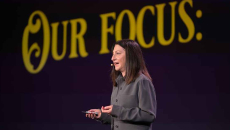Bill Siwicki
The 'agentification' of health IT that integrates AI and automation is enabling a real-time reimagining of practice operations, workflows and the patient-provider experience, the EHR vendor president says.
The HIT landscape is evolving toward tools that support tangible improvements in direct care delivery, diagnostic accuracy and the preservation of meaningful human connections, Kem Graham of EHR vendor CliniComp says at HIMSS25.
So says Artisight CEO Andrew Gostine. Hospitals of the future will rely on real-time data capture, predictive analytics and intelligent automation to scale care while improving both the patient and clinician experience, he adds.
The company's global healthcare director dives into the major update of medical search: "Both new genAI capabilities represent a significant step forward in how healthcare organizations can access, view and use critical patient information."
In the journey to better healthcare, take a lot of smaller IT steps and clear hurdles along the way – the gains made become more evident nearing the summit, says Marcus Perez, president of Altera Digital Health, at HIMSS25.
That's according to Ziv Ofek, CEO and cofounder of MDClone, who will explain best practices to make it so. He will be speaking in a HIMSS25 session and says tech that empowers independent exploring and analyzing of data is a game-changer.
That's the message Patty Hayward, general manager of healthcare and life sciences at Talkdesk, will delve into at HIMSS25. She also will be speaking on making contact centers value drivers, not cost centers.
Helen Waters previews a host of technologies the EHR giant will be showcasing in its booth and in educational sessions. They include generative AI, intelligent search and Meditech-as-a-Service.
Another tip for HIMSS25 attendees from Dr. Hamad Husainy, CMO at PointClickCare: Look to technology to help with the inevitable growth of value-based care – streamlining transfers from hospital to post-acute care is one strategy.
At HIMSS25, Halima Ahmadi-Montecalvo, vice president of research and evaluation at Unite Us, talks social determinants of health program design that drives ROI. She also offers technology tips for show attendees.










